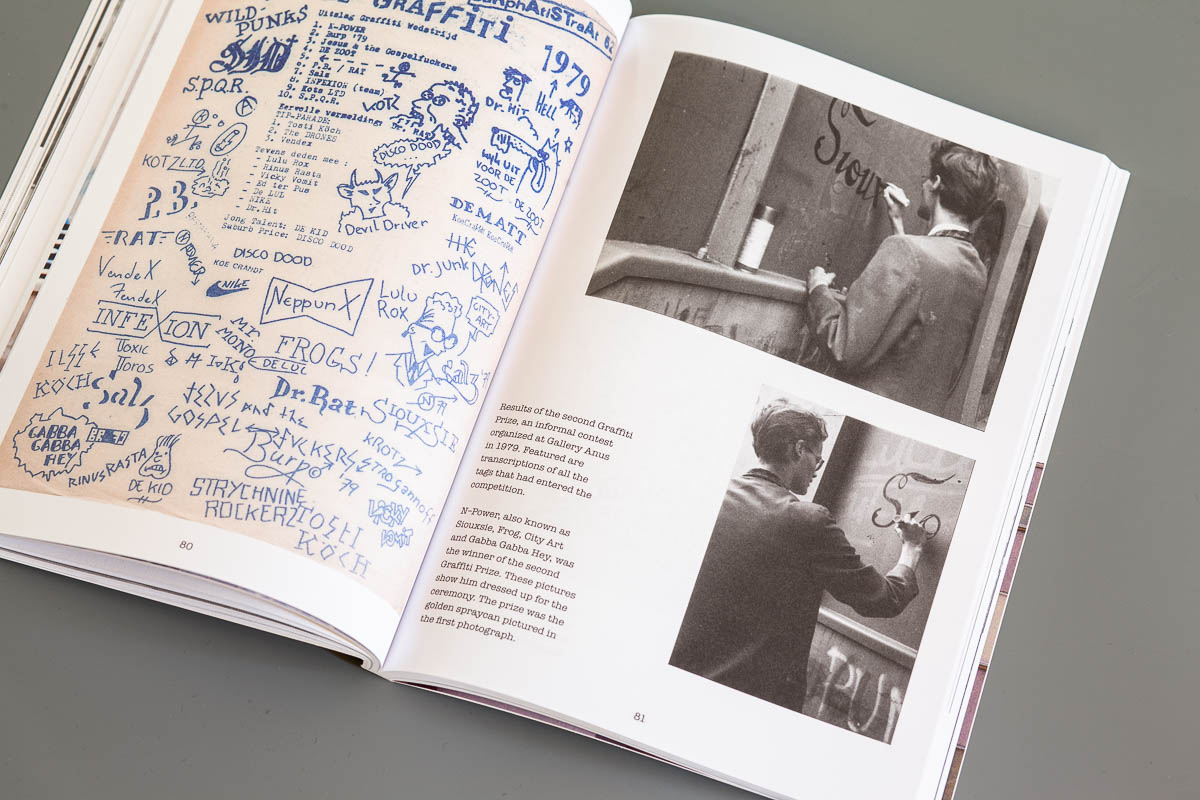Punk Graffiti Archives: The Netherlands
2018 | 17 × 24 cm | 166 páginas
Punk Graffiti Archives: The Netherlands documenta la escena de graffiti con origen en el punk que invadió Holanda entre 1977 y 1983, antes de que la tradición del graffiti neoyorquino se extendiera entre la juventud local.
La producción de Punk Graffiti Archives: The Netherlands incluyó meses de investigación en varios archivos privados, entre ellos los dos mayores archivos de docmentación sobre graffiti y punk, el de Diana Ozon y el de la Dutch Graffiti Library. El libro incluye varios recortes de periódicos y fanzines de la época traducidos al inglés.
Punk Graffiti Archives: The Netherlands se publicó como parte de la feria editorial Unlock Book Fair de 2018 junto al libro Punk Graffiti Archives: Madrid. La feria tuvo lugar en Ámsterdam bajo el tema «punk y graffiti.»
Punk Graffiti Archives: The Netherlands
17 × 24 cm
166 páginas
Inglés
196 ilustraciones
Color
Tapa blanda
Primera edición publicada por Urbanario, Madrid, 2018
Segunda edición co-publicada por Urbanario y Hitzerot, 2019
Dónde comprarlo:
Grant Librería – Miguel Servet 21, Madrid. Librería física y online.
Writers Madrid – Luna 19, Madrid. Librería física y online.
Fort van Sjakoo – Jodenbreestraat 24, Ámsterdam. Librería física, acepta pedidos por correo.
Hitzerot.com, Berlín. Librería online.
De la introducción al libro:
Throughout the decades of 1980 and 1990 the New York tradition of graffiti conquered the whole European continent. But by the early eighties graffiti was nothing new for many urban youth in Europe. Graffiti done by punks was commonplace — slogans, bands’ names and personal nicknames. And punk-originated tagging scenes had developed in some cities with little knowledge of what had been happening in New York.
Two scenes in particular grew to become full-fledged competitions for all-city visibility and reached a notable degree of maturity regarding graphics, methodology and values. One was the Amsterdam scene, started in the late seventies and faded around 1984. The other was the “flechero” graffiti from Madrid, practiced mostly during the second half of the eighties.
Both scenes disappeared when the New York tradition of graffiti became better known through the arrival of books and documentaries. The imported culture was far more complex than the local ones, and in many senses more interesting, so many writers abandoned the local codes and started to explore the game of tags, throw-ups, pieces and trains.
[…]
In the late 1970s an intense but casual tagging scene was developed in Amsterdam by punk and squatter kids. By the turn of the decade a second generation of writers not necessarily connected to punk took over and really pushed the idea of getting up and going all-city. The scene thrived until the New York tradition of graffiti was imported and widely adopted by local writers in the mid eighties.

















